Apple could have sold me an iPhone SE 4, but it won't sell me the iPhone 16e
If you're confused about who the iPhone 16e is for, you're not alone -- I know I won't be upgrading.
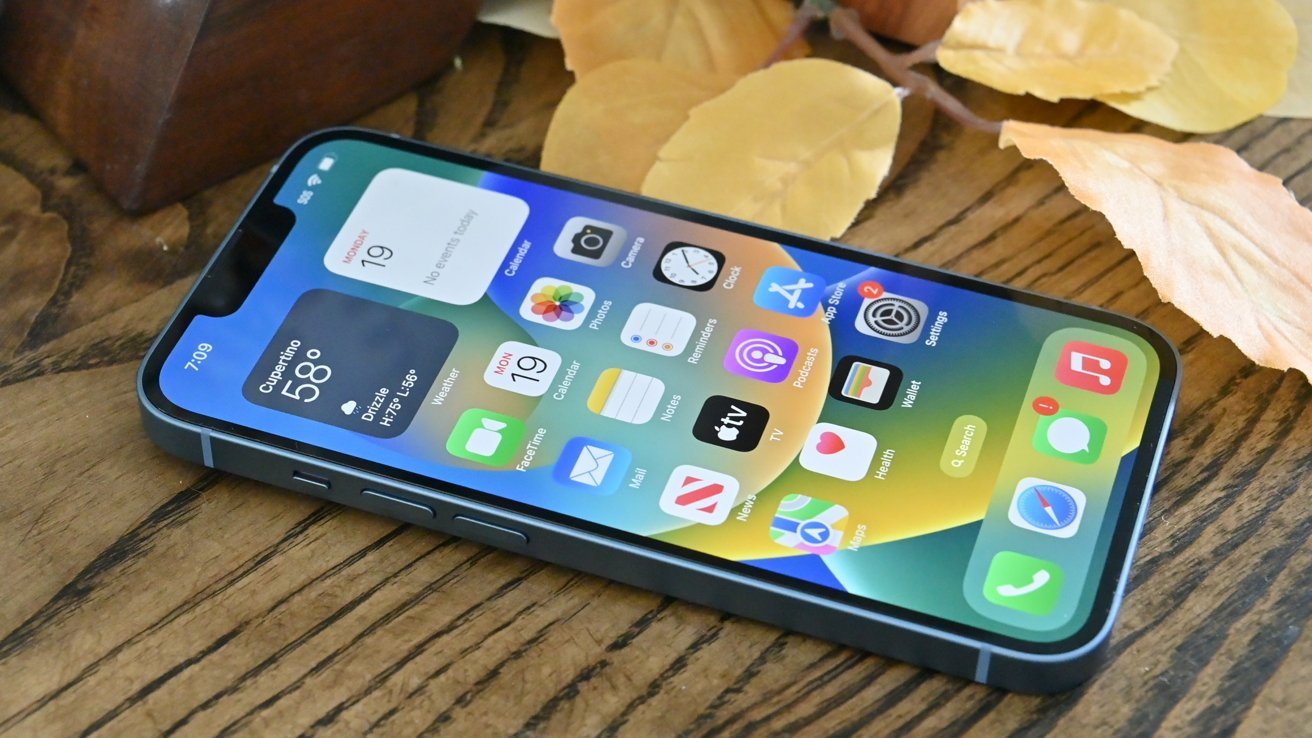
Alas, poor iPhone SE! I knew him, Horatio.
I'm going to cut right to it. I should have been an easy sell for the iPhone SE 4, but I'm vehemently against the iPhone 16e.
If you've read any of my opinion pieces here in my nearly six-year tenure at AppleInsider, you'd know that I'm not an iPhone fanatic. Unlike most of my coworkers, I've never owned a Pro-level iPhone model.
In fact, my history with the iPhone lineup is pretty telling. I started with the iPhone 4, though I wound up swapping it for a flip phone back when those were still a thing.
I just didn't care about the iPhone then.
Several years later, I got myself an iPhone 5c -- refurbished. This was the first smartphone that I genuinely liked.
I loved its compact size, I liked the feel of the smooth plastic back, and it came in a color I affectionately called "punch-you-in-the-face-yellow" which is sort of a thing for me.

I really, really like yellow.
If not for a fateful collision with a sidewalk, I probably would have held onto the iPhone 5c for an embarrassingly long time.
I jumped to Android for a very brief time because the Nexbit Robin was affordable and I was a broke college student. I learned quickly that I just wasn't cut out for an Android phone.
The next line of updates for me included the original iPhone SE, which I thought was fine. Three years later, I got a base model iPhone 11, which I did not like.
It was too big for my hands. It went crashing to the floor when it fell out of my back pocket constantly -- at least I had a good case on it this time.
Despite the iPhone 12 debuting the first mini iPhone, I didn't feel ready to upgrade. I wasn't planning on upgrading until the iPhone 14 line, but Mike was kind enough to point out that Apple was likely killing off the mini lineup.
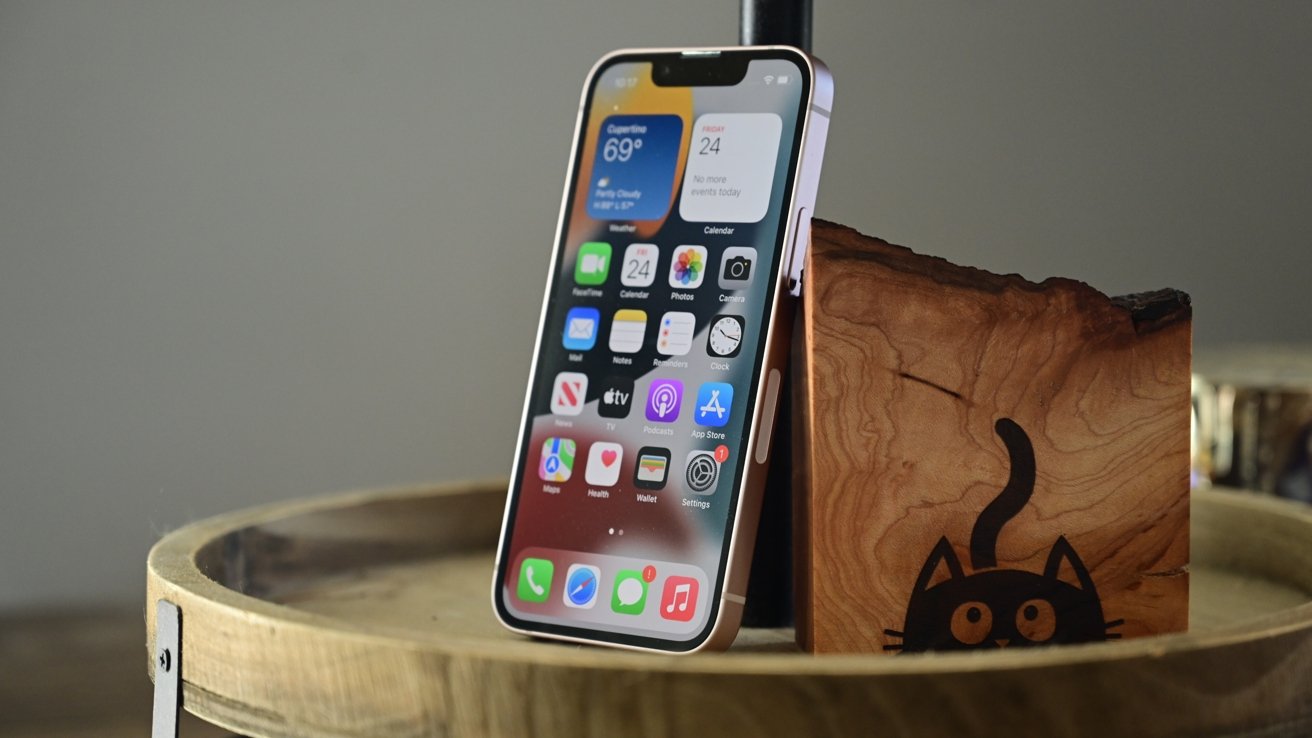
Apple's iPhone 13 mini, beloved by at least one AppleInsider staffer
So I traded in my iPhone 11 for an iPhone 13 mini. It's the first iPhone I've actually liked, rather than just felt ambivalent towards, since the iPhone 5c.
MagSafe and Face ID are fantastic upgrades over the iPhone 11, and thankfully, it fits in my pockets again.
I'm not bitter about Apple killing off the mini lineup by the way, I say, bitterly.
All this to say, I'm hardly what you'd consider an iPhone evangelist. I have Apple products that I'll go to bat for, of course.
I have an Apple Silicon iMac that I love, and a fourth-generation iPad Air that I adore. However, I think the age of both speaks to how often I upgrade my tech.
But I am an iPhone owner. And I am content to stay in the Apple ecosystem.
My iPhone 13 mini is getting a little long in the tooth. I briefly thought about upgrading to the iPhone 16 Pro, but I wound up holding off.
I am not a Pro-level iPhone user and, while I'm not a broke college student anymore, I have a mortgage and student loans. The money could be better spent elsewhere.
That is the exact reason why I was excited when the rumor mill started suggesting that the iPhone SE 4 was on the way.
The promise of a better budget iPhone
Leakers and analysts alike had been heralding the upcoming iPhone SE 4 for a while. While several rumors seemed implausible, everyone more or less had the same opinion on what it would be.
It would have a notch, rather than the Dynamic Island. It would be compatible with Apple Intelligence. It would look like the iPhone 14. It would probably feature Apple's new in-house modem.
Essentially, we were expecting a better budget iPhone. You know, like a next-generation iPhone SE.
What we got, however, was not that.
The iPhone 16... e?
On Wednesday, when the AppleInsider Staff was taking bets on when the new iPhone would be released -- I called it, by the way -- we were all still assuming it'd be the fourth-generation iPhone SE. After all, the reliable leakers were still calling it that, and the sketchy ones were going with 16e.
When 11 AM ET hit, the Apple Store updated to show a new model of iPhone. It wasn't the iPhone SE. It was the iPhone 16e.
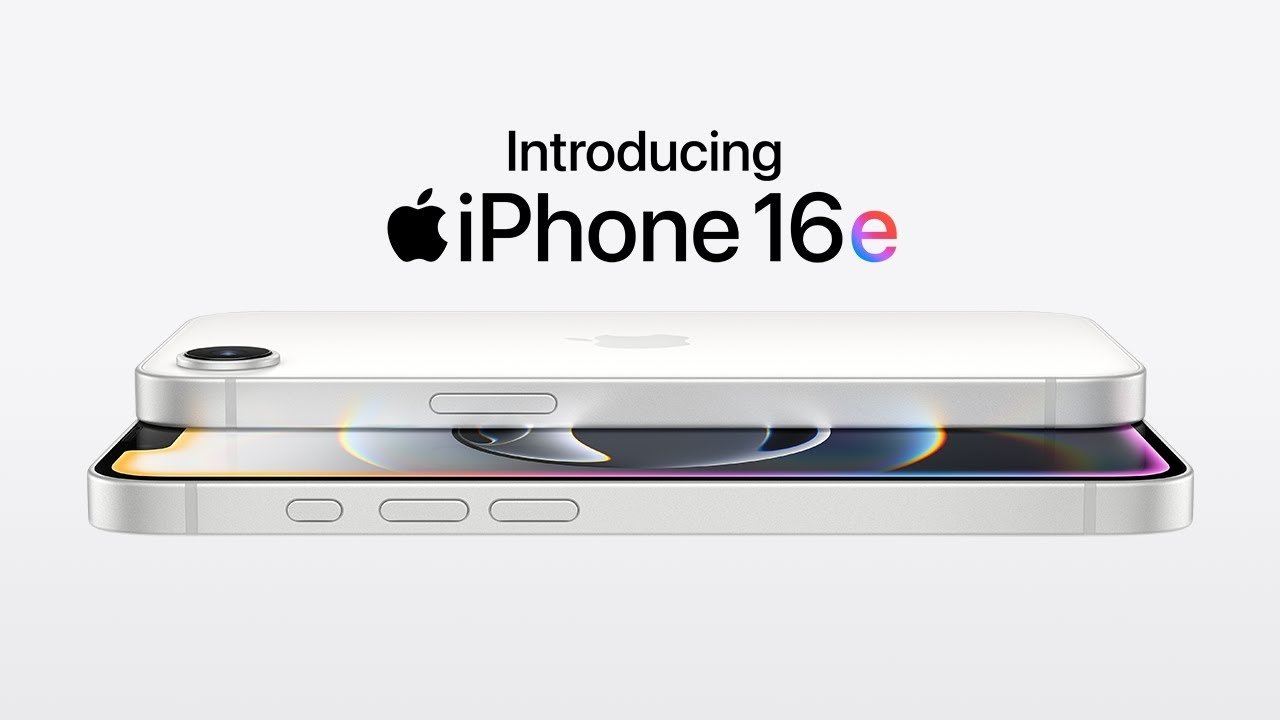
The iPhone 16 what-now?
Apple's weird history with appending letters to the end of a number aside, none of us really knew what to make of it at first. Who was the iPhone 16e targeting, because it wasn't immediately obvious.
I think I was the first one to notice it didn't have MagSafe. Wes was the first to point out that the price was a hard sell, the iPhone 16e is priced at $599, while the iPhone SE 3 launched at $429.
Once things settled down and I had a chance to read through the specs, I felt confused.
It had a notch and not the Dynamic Island. It could utilize Apple Intelligence features. It had Apple's in-house modem. It looked like the iPhone 14.
At first blush, it appeared to be the phone we were told was coming. Yet, it wasn't the phone I was expecting.
It was a half-step between the iPhone 15 and the iPhone 16. It was also somehow less and more than the iPhone 15.
I was severely disappointed that the price was $599, rather than the $499 I'd expected. That puts it in a weird spot in the iPhone lineup.
It's not better than the iPhone 15, it's just different
We run a lot of comparisons here, thanks to Malcolm's willingness to spend hours pouring over spec sheets. It's pretty clear that the iPhone 16e is an improvement over the iPhone SE 3. But is it better than its more recent predecessor -- eh, I don't think so.
For $699, a mere $100 more, you can get an iPhone 15. When compared side by side, the differences aren't as damning as you'd expect.
At least on paper, the iPhone 15 has better cameras, plural. It's got more zoom options, which, by the way, the iPhone 16e can't zoom back to 0.5x. It has sensor-shift optical image stabilization, and the iPhone 16e only features optical image stabilization. It's worth pointing out that every mainline iPhone since the iPhone 12 Pro Max has had sensor shift.
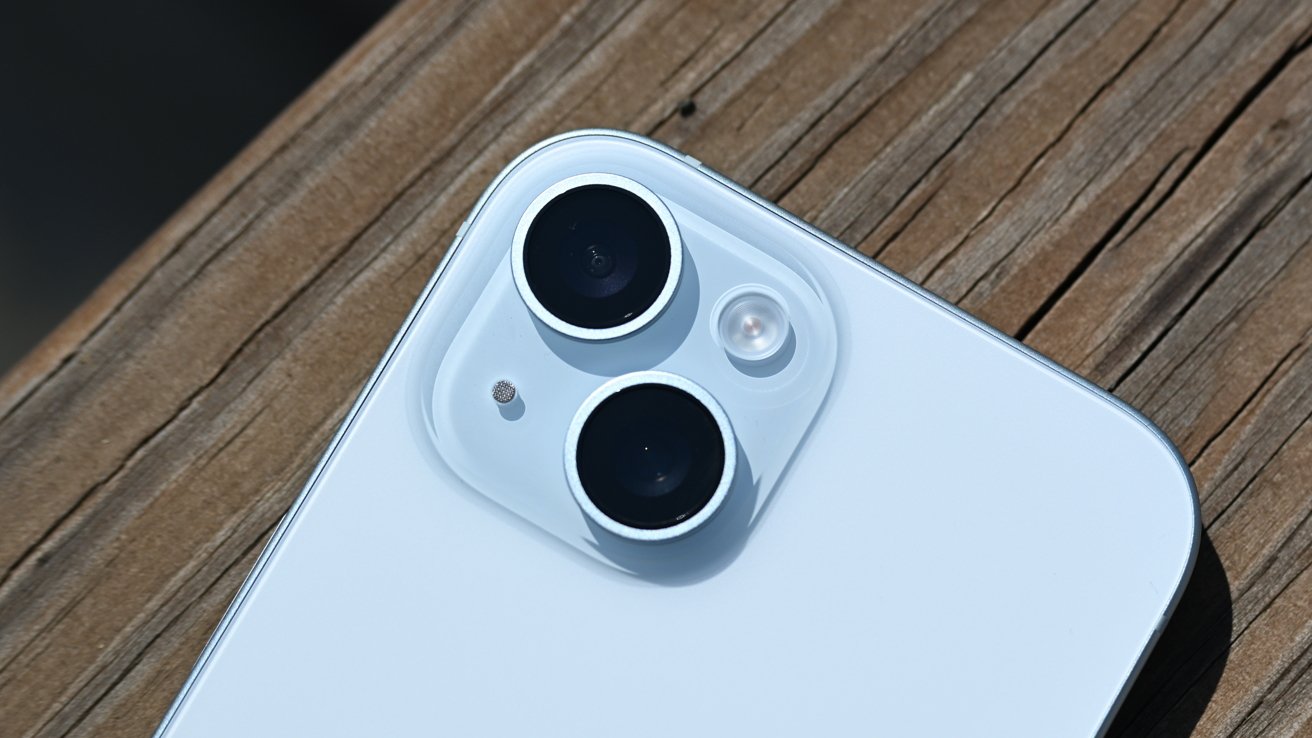
The iPhone 15 camera setup
It also has both Cinematic and Action mode for video recording, while the iPhone 16e does not.
I will give it to the iPhone 16e, it can record Spatial Audio, wind noise reduction, and Audio Mix, which are unavailable on the iPhone 15.
The iPhone 15 has significantly higher maximum typical brightness at base -- 1000 nits versus the iPhone 16e's 800 -- and a much higher outdoor brightness at 2000 nits versus the iPhone 16e's...
Well, Apple doesn't give stats for the iPhone 16e's peak outdoor brightness. The highest it lists is 1200 nits in HDR mode. Make of that information what you will.
The iPhone 15 doesn't feature Apple Intelligence, which I'd argue is probably fine for the casual user. I know that Apple Intelligence is not a selling point for me, and I don't think I'm in the minority of "casual users."
The iPhone 15 has a 5-core GPU over the iPhone 16e's four cores.
Both phones feature Crash Detection, Emergency SOS via satellite, Roadside Assistance via Satellite, and Messages via Satellite, so there's no compromise there.
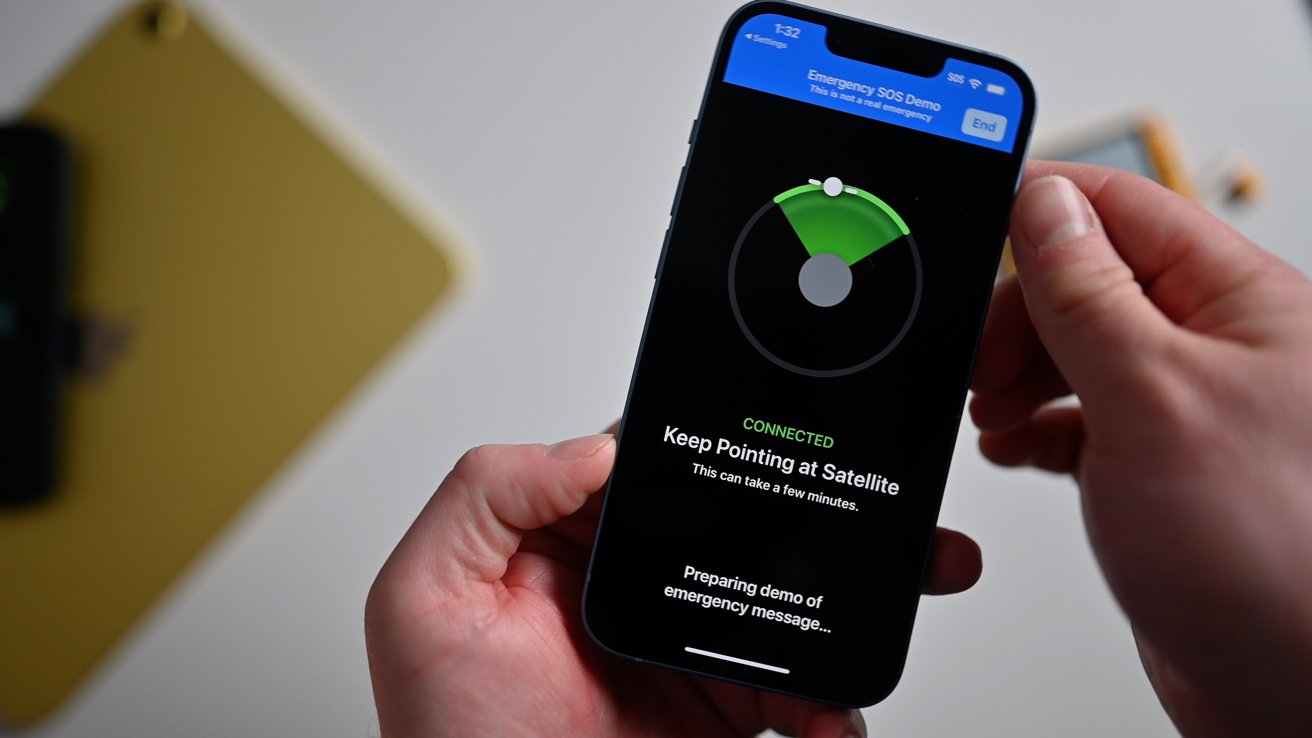
You'll get satellite features with either the iPhone 15 or the iPhone 16e
The iPhone 15 has Ultra Wideband, while the iPhone 16e does not.
And yes, the iPhone 16e does have an improved battery life over the iPhone 15. I'm willing to concede that point. But I rarely run my battery to empty, even when I'm out all day, and I'm rocking an iPhone that made its debut three years ago.
This is where I'll remind you that the iPhone 16e lacks MagSafe. They couldn't even give us MagSafe, a feature that I think nearly everyone would have assumed was a standard iPhone feature by this point.
Instead, it has Qi charging. It does not have Qi2 charging, either by the way.
So now, if you upgrade to the iPhone 16e from the iPhone 12 or newer, you lose MagSafe. MagSafe is one of the few iPhone features I actually care about.
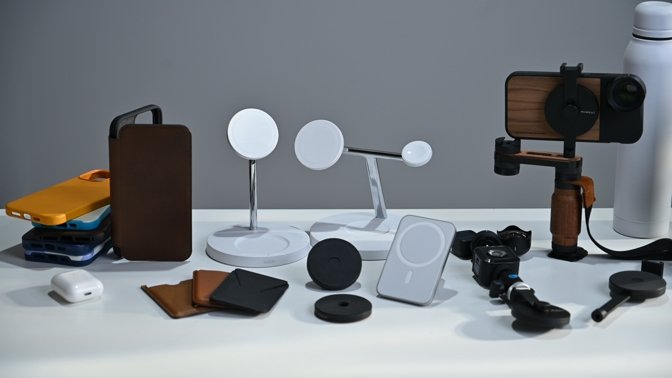
So, what are we supposed to do with this, then?
And yes, I recognize that you can get a magnet sticker and put it on your phone and sort of get some of the same compatibility back.
And I know that there will be third-party cases that include the magnets, too, because I think they realize that iPhone owners have come to expect that.
But it isn't the same.
For an extra $200, which I recognize isn't a small amount of money, you get a bunch of iPhone 16 features that aren't available on the iPhone 16e.
Again, I ask, what was the target demographic?
What the iPhone SE 4 should have been
I can already tell a fair amount of folks are probably going to assume I'm arguing semantics.
"Oh, Amber, if they would have called it the iPhone SE 4, you wouldn't be so hard on it."
And I think that's a reasonable assumption. I mean, I think you're wrong, but I think it's reasonable to assume that.
It comes down to price versus expectations. The iPhone 16e isn't that good of a deal.
When the iPhone SE 3 was released, it was priced at $429. The then-current mainline iPhone, the iPhone 13, was priced at $799. That's a savings of about 46%.
The iPhone 16e costs $599. The iPhone 16 still costs $799. That's a savings of only 25%. That's significantly less.
And yes, you could argue that everything is more expensive now. But it probably didn't need to be.
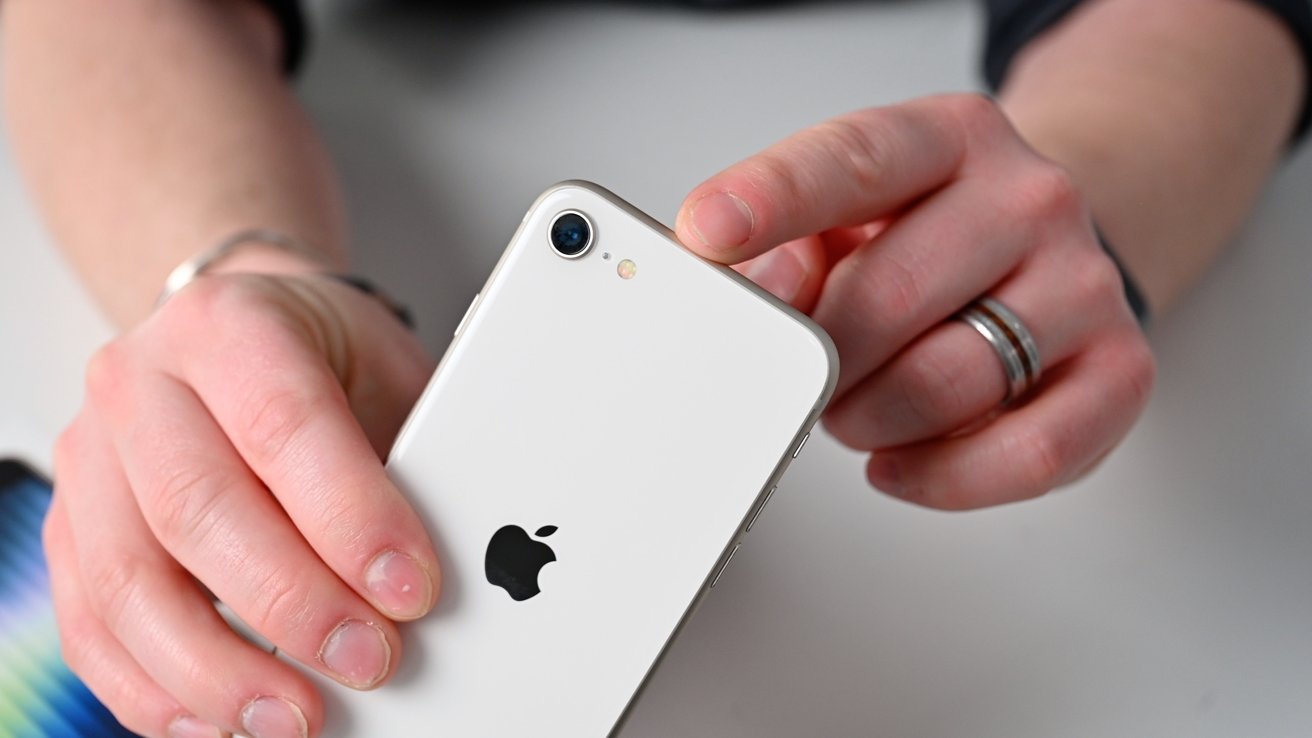
The third-generation iPhone SE camera
The iPhone SE 4 could have done away with the 2-in-1 camera system, which I can assume makes up a large part of the price discrepancy between the would-be iPhone SE 4 and the iPhone 16e.
I think most people who were looking to upgrade to the iPhone SE 4 would have been fine with a 48MP single-camera system. It may come as a surprise to some, but not everyone who buys an iPhone is trying to be the next big iPhone photographer.
And I understand that Apple was trying to get Apple Intelligence into as many people's hands as possible. So whatever Apple released was going to need the A18 chip. This likely explains why the "budget model" has so many high-end features. Because it already could do that.
But I don't think the entry-level iPhone should use Apple Intelligence as a selling point in the first place. That feels like something you should pay extra for.
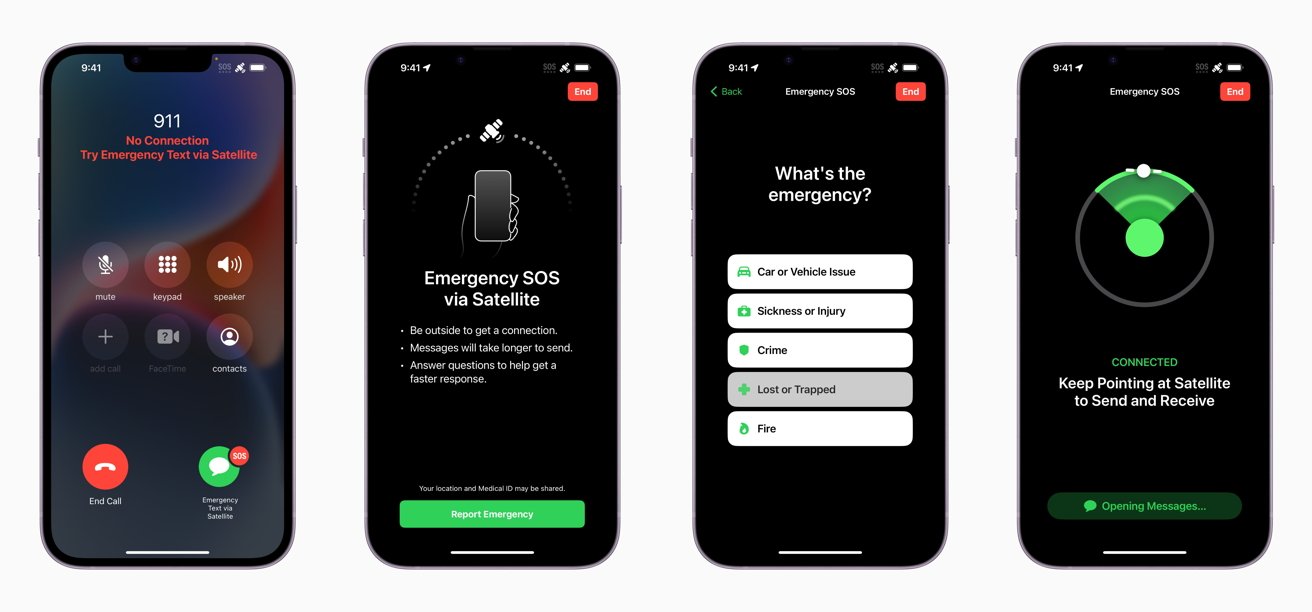
Satellite features are great -- assuming you're ever out of range of cell service
The satellite features are another thing that could have been cut. Yes, I think the satellite features are fantastic. One of the reasons I was debating updating my phone to the iPhone 16 was to gain access to them.
You know, in case I find myself without cell service in the same fifteen block radius I spend 97% of my time in, I guess.
What I'm saying is, we had thirteen generations of mainline iPhone that didn't have any satellite features. They're nice, but they could be an extra feature you pay more for by buying a mainline phone.
And I hate to beat a dead horse here, but they couldn't have given us MagSafe?
Requiem for the iPhone SE
I know I'm far from the only person who is struggling to wrap their head around who the iPhone 16e is for.
I know the general-yet-wobbly consensus on staff is that the iPhone 16e isn't for iPhone SE 3 owners. It's not even targeted toward new-to-Apple folks. Instead it seems like it was made for iPhone owners who have been too stubborn to upgrade from older models.
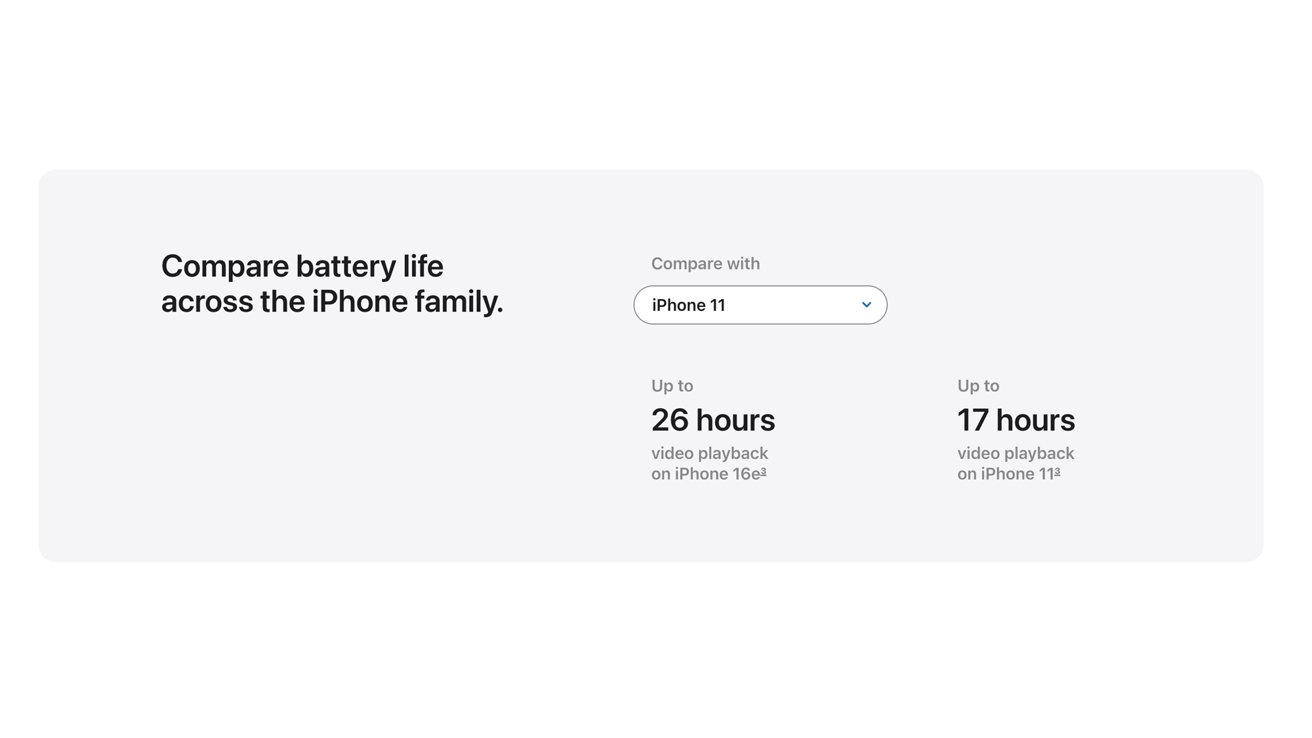
Even the iPhone 16 splash page gives up the game
Well, here I am, an iPhone owner who is still too stubborn to upgrade. And I probably would have been an easy sell at $499, for the record.
Historically, the iPhone SE didn't make up the bulk of Apple's orders. It was never designed to.
Instead, it was designed to target the casual user. The John Everyman of modern technology.
What I'm saying is that the iPhone SE was targeted toward me, specifically. But also to a lot of other people.
The iPhone SE is for your parents, or if you're younger, your grandparents. While there are many tech savvy septuagenarians, I'd argue there are significantly more senior citizens who aren't looking for a phone that gives them the option to use artificial intelligence to generate images of their pets or loved ones.

My dad's response to this image I generated of him was a polite, but disinterested "Oh, look at that."
The iPhone SE is for enterprise solutions. The kind of work phones that need to run in-house apps. The iPhone SE might not be your employees' main phone, but everyone has to have one.
The iPhone SE is for people who largely use their iPhones for the same reason a significant chunk of people use an iPad instead of an iPad Air or iPad Pro. You're just using it because it does the two or three things you need it to do.
You use it to call people, text people, browse social media, and watch all your funny little videos. Not everyone needs to be able to shoot an entire movie on a smartphone.
The iPhone SE is for tweens who need a phone so they can call or text their parents when they need to be picked up from soccer practice.
As William said, a big target demographic is first-time iPhone owners who are looking for a cheap on-ramp to the iOS ecosystem.
The iPhone 16e isn't for those people.
My partner, who still clings to her iPhone SE 3, took one look at the iPhone 16e and balked.
"It doesn't come in (RED)," she said.
"It does not," I replied, waiting to hear the words that I already knew were coming.
"Hard pass."
Like me, she's a casual user. She would appreciate the camera upgrade, sure, but beyond that, nearly every other feature on the iPhone 16e would go wasted.
My dad, bless him, is never going to use Apple Intelligence. Hell, if he accidentally triggers it while using his phone, he'll probably call me and ask me how to get it to stop.
He's not going to care that he can record video with Spatial Audio. I can't even tell you the last time my dad recorded a video on his phone in the first place.
And, anecdotally, I don't even really love the idea of trying to move him from the home button to the full-screen method of switching apps by swiping up from the bottom of the screen.
If you're the resident techy of your family, I assume you also have this same looming dread.
I think Apple is planning on releasing a yearly version of the "e" series. After all, it has affixed the letter onto its mainline naming convention.
And that's unfortunate. I think the "e" will forever be an awkward half-step between the previous generation and the current generation.
It will be marketed as a good upgrade for those who were already on the mainline series in the first place. And that's not what the iPhone SE was, and it's not what the iPhone 16e should be.
I might be wrong, but I fully expect the iPhone "e" series to go the way of the mini. An attempt at cornering a market that Apple has identified, but ultimately not big enough for Apple to justify the cost of production.
And they couldn't even give us MagSafe.
Read on AppleInsider




Comments
I started with a 5c, went to an SE, and then an 11. The difference is that I like the 11, I still have it.
But the rest of the points, yes I am 100% there. This isn’t an inexpensive iPhone. It’s not a small iPhone. Many of the SE customers are not going to be interested in AI. The features it has seem crippled in an attempt to get an upsell to a 15 or 16, but the target for the SE wasn’t people that would buy the main line iPhones.
I honestly don’t think I would recommend the 16e to anyone.
I honestly think Apple will lose a lot of people to Android.
I also bought my 13 mini after hearing Apple was expected to terminate the mini sized phones. And here I am, surviving with my mini until Apple will realize the mini does have a lot of admirers. I won’t go larger and I won’t go the Apple Watch route (I’m a Withings guy). I just keep my fingers crossed and hope it works for years to come.
Seriously, consider the challenge. Apple is obviously leaning into 'Apple Intelligence,' so much so that they included an AI-capable A18 chip in the 16e. The easiest way to make a less expensive iPhone without compromising on quality would have been to build it around an older CPU. Including the A18 is probably why it's not a hundred bucks cheaper, and also why they had to look hard at the iPhone 16 spec sheet for other cost saving options. They had to not only find ways to make it cheaper to manufacture, but also to identify features that would warrant spending $200 more for an iPhone 16. If this column and the complaints elsewhere about the lack of MagSafe are representative, they may have hit their mark.
For people looking to save a few bucks however they can, the 16e will work. It also won't be the only iPhone in four years that won't do AI, which by that time will be central to the Apple ecosystem. (This is also why they're likely about to come out with a Home Hub device that will process AI for all in-home connected HomePods and Apple TVs.)
On the flip-side, the complaints here also demonstrate that the 16e probably won't cannabalize sales of the 16, or make people who already bought a 16 mad that they could've saved $200 if they'd just waited a couple of months.
I know there are those who believe that everything Apple brings to market is terrific and beyond refute. They’ll brush aside the lack of MagSafe or point to alternatives. Good for them. But for me, MagSafe is so simple, effective, and reflects Apple’s values to always go beyond the ordinary by having regard for small details that customers take notice of and come to associate with the brand. Everyone who’s known Apple for any amount of time knows about Steve Jobs’ deep regard for small details. MagSafe is ultimately a small detail, but it’s still an Apple brand differentiator that we’ve come to expect as a baseline feature. This little detail takes a little bit of shine off Tim’s insistence that this new product is a new member of the family. It is more like the runt of the litter.
So the reality is that the 16e is not the replacement to the SE but is in fact a new device to allow entry into the latest range while sacrificing some features that aren’t actually that important anyway. I have the 13 Mini and I use a Qi charger in my ute but all other times I use the cable.
Personally, if I was going to replace my 13 Mini I’d love to have a Pro Max but I’d be able to afford the 16e and feel good that I’m not sacrificing processing power.
And it's pretty great that the base model of the current state-of-the-art product line is $200 less than last week.
Apple shaved of a few features that the average consumer won't miss and cut the price by $200.
And simultaneously they abandoned maintaining a second product line of prior-generation phones at an even lower price. So yeah, if that's what you want, it sucks that that's not available.
You (different you, the author is article, not the comment I quoted) ask who the 16e is for? It's for me and every member of my family. I will happily save $200 in exchange for MagSafe, a slightly dimmer screen, some camera related bells and whistles (and enjoy the slightly improved battery life).
I get what Apple's doing. I've been doing tech journalism for nearly a decade at this point. I know that AI is the next big thing. I would prefer if it wasn't, but I do get it.
That being said, I don't think Apple needs to include Apple Intelligence in every single phone. Or at least not to the extent that it's powering more features than it isn't.
In 2013, my dad got his first iPhone. He's not a dumb guy by any means, but he's a dude who hasn't had to interface with technology the way that I have. It's always a joke that everyone says their parents and grandparents are bad about using their phones, but my dad was a god-honest adult, probably in his early 20s, by the time color TV became like, a thing that the average person interfaced with. When I was 21, the first iPhone was out.
We have different experiences.
I honestly applaud anyone over the age of 60 right now who uses any smartphone with any degree of success. And, for the most part, dad's actually REALLY good with his iPhone now. He can often troubleshoot most of his phone-related issues by himself, he texts me all the time, he knows how to check his email, and even pay some bills online from his phone.
But his iPhone experience has been pretty consistent. Thankfully. Blessedly. Apple has done a great job of making the transition between most generations of iPhone and most major OS updates. The baby steps method is good. Yes, there was a bit of an adjustment period between iOS 12 and iOS 13, that one was a little rough, but we got through it just the same.
The man has had an iPhone 6, and every one of the iPhone SE models (partly because he keeps breaking them in a series of comedic accidents.)
He's comfortable with it, and I honestly feel so much better knowing he has a phone. He's my dad, y'know? I want him to be able to contact me -- or anyone else -- if he needs to.
That being said, the idea of trying to help my 72 year old father navigate around Apple Intelligence features is, frankly, a nightmare. I love him so much but the man panic-called me one day to let me know that "the bell" and I quote "had a one on it." The bell had a one on it? What does that mean? What bell? What do you mean it has a one on it? I am 62 miles away and my father is telling me the bell has a one on it in a voice that suggests he is distressed.
Turns out it just meant that someone he subscribed to on YouTube had uploaded a video. The little alert bell in the top right of the screen said (1). The bell did, in fact, have a one on it. But something that I, a 29-at-the-time-year-old barely recognizes as a data blip in my day-to-day, was not as easily understood by a 62-at-the-time-year-old whose primary interaction with a web browser is to go to the Home Depot and price compare home appliances.
He's going to see the new full-sentence AI generated response and he's going to furrow his brow, stare at his phone, wonder who said it, and then call me to tell me that the phone screen is messed up or something.
And I assure you, Apple isn't going to let you disable the feature after a while, or even if they do, it's on by default and there are going to be people who give less tech savvy people an iPhone and not disable it. It'd be nice to have a model that is, y'know, just a phone.
This isn't just about me and my dad, though I bet if you go on the internet right now, there are hundreds of people worrying about the exact things I'm saying here. My dad is a smart guy, and I'm sure he'll get the hang of the iPhone 16e, and probably the 18e when he somehow destroys his 16e in a chainsaw accident or something. My gripes about my dad are, more or less, meant to illustrate that there are a significant number of people who are going to have to deal with teaching less tech savvy people how to use the over-engineered pocket rectangle.
The argument was never that the iPhone 16e lacked features.... well, save for MagsSafe. It is actually about that a little.
It's about Apple creating a new mainline entry to replace what was never meant to be a mainline entry in the first place. It's about the 16e being stuck somewhere between an iPhone 15 and an iPhone 16, but somehow lacking capabilities that have been around since the iPhone 12. It's about alienating a smaller, yet significant market of people who don't need -- and in a lot of cases don't even want -- a phone that is geared toward the middle class office worker.
Apple used to provide that in a market that everyone else seems very eager to forget exists. There's a reason a lot of people, even womb-to-tomb Android users, suggest them for seniors. Or for people who may need a really pared down, simple phone. You can really strip an iPhone down if you need to, which makes them great for younger users, users with mental disabilities, hell, even physical disabilities.
At what point does Apple Intelligence start hindering people the iPhone was helping?
If I was a betting man, I'd probably say in about eight days, but it'll really become a thing around Christmas.
That’s the point where I’m outta the Apple Ecosystem.
Oh, you. You're very silly if you think
I think all the hubbub over the past two or three years about artificial intelligence has probably forced apple to start releasing a few AI features sooner than they'd have preferred, so what's emerged under that moniker so far isn't terribly earth shattering. What they've hinted at, however, is a system that will let you tell the phone (or other device) what you want, and it will open the right app and navigate to the thing you want and then do the thing you want without you having to remember the steps to get there yourself. Maybe the change would confuse your dad at first, but if "Send Amber that article I read this morning about glow in the dark petunias" actually drops an article about glow in the dark petunias in your inbox, I'd say he (and others) would embrace that pretty quickly.
The competition's approach to AI has been a hot mess so far, and more than a little of it is smoke-and-mirrors. At least if past is precedent, Apple's approach to such things has been to "arrive late," but then implement the technology in a way that actually makes it useful, and as Steve Jobs used to put it, makes it into something you didn't know you needed. Maybe I'm a pollyanna here, but if they were going to implement AI the way others are, as more bells-and-whistles that would just confuse your dad, I don't think they'd bother to include it in the entry-level iPhone 16. The fact that they did is what makes me more confident that it's going to be the other thing, which makes it way more important to include in the 16e than MagSafe.